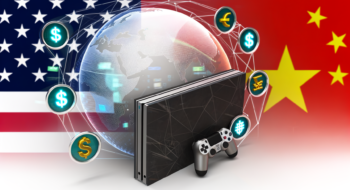Artificial intelligence (AI) is rapidly transforming various industries, and Hollywood is no exception. As explored in a recent report by Deloitte, there are growing concerns within the entertainment sector regarding the maturity and reliability of AI technologies. Despite these apprehensions, the promise of significant cost savings is driving widespread adoption of AI tools in film and television production. This dichotomy raises important questions about the future of creativity, labor, and economic viability in an industry that has long been synonymous with innovation.
Understanding AI in Hollywood
Hollywood has a storied legacy of pushing technological boundaries, from the advent of sound to the use of CGI. Now, as artificial intelligence takes center stage, the industry is presented with both opportunities and challenges. AI has the potential to enhance numerous aspects of filmmaking and television production—from scriptwriting and casting to post-production editing and marketing. Yet, numerous industry insiders express concerns about the maturity and ethical implications of these technologies.
Cost-Saving Innovations
The upside, however, is hard to ignore. A major driving factor behind the industry’s increasing adoption of AI is the significant cost savings it offers. As reported by Deloitte, studios and production companies are facing pressure to cut budgets while maximizing profitability, and AI technologies promise to deliver just that. For example:
- Script Analysis: AI tools can analyze scripts for pacing, character development, and audience engagement, offering recommendations that were previously reliant upon instinctual human judgment.
- Casting: Algorithms can analyze the past performance of actors in various roles, predicting which actors would bring in higher box office earnings.
- Post-Production: AI can streamline editing processes and even generate visual effects, reducing the time and personnel traditionally required.
These innovations not only enhance productivity but also allow for smarter allocation of resources, enabling studios to focus on artistic endeavors rather than getting bogged down in logistical concerns.
Concerns About AI Maturity
Despite the optimism surrounding AI, there remains a palpable tension in Hollywood regarding the maturity of these technologies. Many professionals worry that while AI can assist in more mundane tasks, it can never fully replicate the nuanced understanding and creativity intrinsic to human artists. As one industry veteran put it, “AI might help in crunching numbers and analyzing data, but storytelling is a deeply human activity.”
In addition to concerns about creativity, there are also fears regarding job displacement. As AI continues to evolve, the fear is that many roles—especially those involving routine editing, data analysis, and even screenwriting—might be replaced by machines capable of performing these tasks with greater efficiency. The entertainment industry is known for its fierce competition, and the specter of obsolescence is haunting many professionals.
The Balance of Creativity and Technology
The ironies of Hollywood are profound. The same technology that threatens to replace jobs is also stimulating creativity in new ways. AI tools encourage collaboration, inspiring fresh ideas while enhancing the creative process. By leveraging AI, writers and directors could experience a creative renaissance rather than relegation. As Kelly Brenner, a producer at an up-and-coming studio, noted, “When AI informs our creative process, it doesn’t replace our voices—it amplifies them.”
Adoption of AI Tools
As AI technologies evolve, their adoption is expanding across the entertainment sector. Here are some of the AI tools and platforms currently making a splash in Hollywood:
- ScriptBook: This AI-driven tool reads screenplays and predicts box office performance based on analysis of narrative elements.
- Cinelytic: Utilizes AI-powered algorithms to assist studios in making data-driven decisions for movie marketing and distribution.
- Runway: Offers powerful AI tools for post-production, including video editing and visual effects.
Each of these tools serves to reduce costs and enhance efficiencies while still maintaining the artistic spirit of filmmaking. AI might never fully replace human creativity, but it can certainly augment it, allowing artists to explore realms previously thought impossible.
A Future of Collaboration
As the debate surrounding AI in Hollywood continues, it’s essential to recognize the potential for collaboration between human creativity and technological advancements. Many leading institutions are advocating for a marriage of these two worlds through educational initiatives aimed at familiarizing creatives with AI technologies. A prime example can be found in workshops and seminars focused on the potential of AI applications in storytelling and production. This fusion of tech-savvy skills and artistic talent could serve as the catalyst for a new age of cinema.
The Long View
The tension between innovation and tradition in Hollywood underscores a broader narrative about our relationship with technology. The entertainment industry is built on the ethos of creative exploration and expression—principles that AI cannot replace but might enrich. Those in Hollywood advocate for responsible and thoughtful integration of AI, ensuring that it doesn’t compromise the essence of storytelling.
Discussions about AI’s role in Hollywood aren’t just about technology. Issues surrounding copyright, ethics, and the creative process itself also come into play. What happens when an AI writes a screenplay or creates original music? These are the quandaries that industry leaders and policymakers must grapple with.
Looking Ahead
As the dynamics evolve, industry stakeholders must decide how they wish to embrace this technological shift. The concerns surrounding AI maturity should not serve as roadblocks; rather, they should foster dialogue in the industry about best practices and ethical considerations. Continued partnership between human artists and AI tools may lead to a renaissance in creative storytelling that is as unpredictable and thrilling as the movies themselves.
Conclusion
Ultimately, the adoption of AI in Hollywood is both a promise and a challenge. Organizations like Deloitte have rightfully highlighted the potential pitfalls while acknowledging the immense benefits. The mature use of AI can mitigate costs and streamline processes, while also allowing for innovative storytelling to flourish. As the industry navigates these waters, we remain cautiously optimistic about a future in which creativity, fueled by technology, leads to groundbreaking advancements in film and television.
For more insightful discussions on how AI transforms industries and the creative process, visit Neyrotex.com. The conversation has just begun, and it’s a fascinating one!







